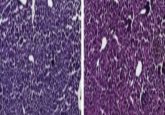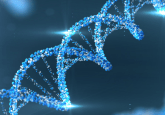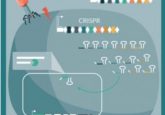Streamlining CRISPR workflows with Ryan Donnelly

 At ASCB 2019, BioTechniques Digital Editor, Tristan Free, spoke to Ryan Donnelly, product manager for gene editing reagents at Horizon Discovery (Cambridge, UK), about the company’s new synthetic single-guide RNA (sgRNA) and how they are using it to streamline CRISPR workflows.
At ASCB 2019, BioTechniques Digital Editor, Tristan Free, spoke to Ryan Donnelly, product manager for gene editing reagents at Horizon Discovery (Cambridge, UK), about the company’s new synthetic single-guide RNA (sgRNA) and how they are using it to streamline CRISPR workflows.
Can you tell us about Horizon, what’s the company’s vision?
Horizon’s overall goal is to support scientists on their path from research to therapy, wherever their work sits within that continuum, and our focus within that is gene editing and gene modulation applications.
In this area, we offer a diverse suite of products and unique solutions. Regardless of whether a researcher needs reagents to run a simple knockout experiment in their lab or if they want to use our services to help them take on a more daunting project like a custom CRISPR screen or generating a unique cell line – we can help wherever their research takes them.
Can you tell us about the new synthetic sgRNA that you have developed for streamlining CRISPR workflows?
We recently released a human genome-wide library of synthetic sgRNAs. These are now available as individual guides, predefined libraries and customizable Cherry-pick libraries.
This new product offering complements Horizon’s existing portfolio of Edit-R CRISPR—Cas9 editing reagents, allowing researchers to streamline their workflow and expand gene editing into more clinically relevant cell models.
It’s important to note that all the guides were designed using our proprietary Edit-R algorithm, which maximizes the likelihood of knocking out a protein, not just creating an indel, while also minimizing the potential for off-target effects. This allows us to guarantee editing for every Edit-R predesigned guide, regardless of the format being used.
What is Horizon doing to minimize the off-target effects of CRISPR?
Within that algorithm, we have a very stringent specificity check that takes place. It not only checks for mismatches in similar sequences but also gaps within the sequences. If you have a gap, sometimes that can lead to a guide RNA binding to a region that’s not 100% complementary. We have found that many common web tools used to perform the specificity checks don’t do a good job of accounting for those gaps, which is something that our algorithm takes into consideration. Any design, therefore, that comes out of that algorithm and exists in this library has gone through those specificity checks.
Can you tell us about the impact that this sgRNA is going to have on people using CRISPR editing systems?
We are seeing more and more researchers who want to screen in more clinically relevant cell types, going a step beyond immortalized cell lines, which are robust and can give good data, and moving into things such as primary cells, stem cells and immune cells, such as T-cells, B-cells and NK-cells. The rationale for that is that it minimizes the risk of not being able to reproduce the phenotype. Occasionally, researchers assume that you will see the same phenotype in an immortalized cell line as in a more clinically relevant system – sometimes that just doesn’t carry over.
This is going to help those utilizing more clinically relevant lines because we have, in some instances, seen improvements in the knockout efficiencies when using a synthetic sgRNA format compared to the two-part CRISPR RNA plus tracrRNA system. For researchers working in these more difficult to edit cells, synthetic sgRNAs are a solution to consider.
Additionally, by offering this library in an arrayed format, it opens up some unique downstream applications that only an array format can offer. For instance, high content imaging or other morphological assays.
What are off-target effects of CRISPR and why are they concerning?
What challenges did you face when you were developing these sgRNAs?
Synthesis was a big challenge. When we were going about the designs, we knew the whole human genome is a little over 19,000 genes, and we were going to design three guides per gene. When we sat down and realized we needed to synthesize nearly 60,000 unique RNA oligos, it was a daunting task. I am very thankful that we have a really experienced synthetic manufacturing team at our Lafayette (CO, USA) site. They have been pioneering RNA synthesis manufacturing for over 20 years, so being able to lean on those folks really helped us in scaling to the level required to make this library.
How did your algorithm help you to deal with such a large number of required sgRNA designs?
The algorithm itself was designed using a training set of data that allowed us to see what gave us the best shot of functionally knocking out a protein. We selected a gene family with a downstream protein for which we could use fluorescence imaging to search for in order to observe whether or not there had been a successful knockout. We tiled the gene with all the different potential guides and then looked at which one gave us that highest likelihood of knocking out that protein and scored those guides higher. Once we had that training set of data with those design characteristics, we could apply them to all the genes that exist across the genome.
What is your dream for Horizon in the next 5 years?
I think we do a good job of this now, but I would say keeping up with and being aware of the type of work that researchers are doing across the gene editing and gene modulation continuum. We have been able to build up some really great services and unique product offerings, but the market is moving so fast. We need to make sure we keep up and collaborate in working with the pioneers in the field so that our products and services grow and evolve to wherever this market takes us. That’s my hope for Horizon.
Read more expert interviews on BioTechniques.com





